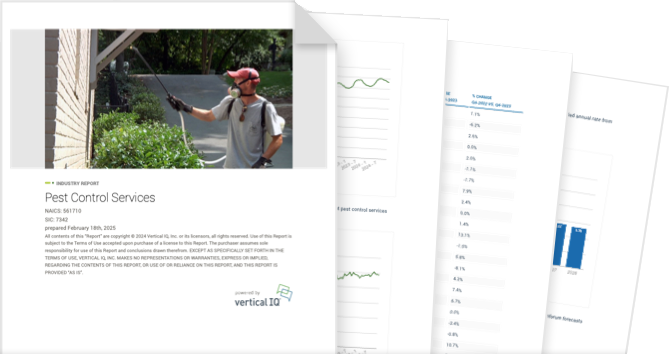Automobile Manufacturers NAICS 336110

Unlock access to the full platform with more than 900 industry reports and local economic insights.
Get access to this Industry Profile including 18+ chapters and more than 50 pages of industry research.
Industry Summary
The 202 auto manufacturers in the US sell vehicles to new automobile dealers, corporations, rental car firms, utility companies, and government agencies, and make vehicles available directly to consumers through subscription services. They also sell original equipment replacement parts to dealers, fleet managers, parts wholesalers, and repair and maintenance companies.
Dependence on Economic Conditions
The automobile industry is highly cyclical: an economic boom is generally accompanied by high sales in the automobile industry, while sales usually suffer during economic downturns.
Competition from Used Vehicles
Used vehicles are a direct substitute for the new vehicles offered by automobile manufacturers.
Recent Developments
Dec 19, 2025 - Automakers Urge Lawmakers to Boost Restrictions on China
- Major US and global automakers - including General Motors, Ford, Toyota, Volkswagen, Hyundai, and Stellantis - warned lawmakers that expanding Chinese auto and battery producers pose a “clear and present threat” to the US auto industry. They collectively urged restrictions on Chinese plants and maintaining bans on certain technology imports. Tariffs on Chinese vehicles and components have also added supply-chain pressures, raising costs for US manufacturers and suppliers. For the auto parts industry, this intensifying competition and political pressure could accelerate supply‑chain shifts. Chinese vehicles are increasingly competitive globally, driven by subsidies and integrated supply networks that include parts and batteries. American suppliers may face reduced demand if Chinese EVs and vehicles enter US markets at lower costs, potentially squeezing margins for domestic parts makers. Automakers are pushing hard to “de-risk” reliance on Chinese components, encouraging suppliers to relocate production, reshuffling supply chains, raising short-term costs, and prompting more regional sourcing strategies.
- American consumers are increasingly rejecting persistently high new-car prices, and the shift is creating significant challenges for automakers. After several years of buyers accepting sticker prices near $50,000 (the new average car price in 2025), many shoppers are now delaying purchases, choosing used vehicles, seeking longer loan terms, or waiting for discounts. The pushback is softening demand enough that industry analysts’ forecasts for 2025 and 2026 have been revised downward, with some manufacturers and dealers already seeing slower inventory turnover, weaker sales, and shrinking margins. Automakers that rely heavily on high-volume sales across multiple models face the prospect of excess inventory and possible production cuts. The trend also highlights a growing dependence on wealthier buyers, raising concerns that middle-income consumers may remain priced out of the market, potentially constraining long-term growth for the industry.
- Battery-powered cars will make up half of all US auto sales by 2039, according to a forecast by consultancy EY, a delay of five years from previous projections. The adjusted forecast reflects a changed political reality with regards to Electric Vehicles (EVs) as the Trump administration eliminated EV targets for automakers and cancelled a $7,500 consumer tax credit for buying an EV. The US now stands to fall behind other countries in the EV race, particularly China. US consumers had already been skeptical of EVs due to their high price and a lack of sufficient charging infrastructure across the country. As a result, EY expects that market penetration for EVs will stay relatively flat at 11% of US auto sales in the next four years, up from 8.1% in 2024. By contrast, EVs are forecasted to make up 70% of auto sales in China by 2039.
- Global automakers have lost about $12 billion so far in 2025 from the Trump administration’s worldwide trade war, according to The Wall Street Journal. The 10 largest car makers expect their net profits to fall about 25% this year to the lowest levels since the pandemic. Toyota took the biggest hit with operating profits dropping by $3 billion, the largest of any auto manufacturer. Most auto companies have not yet raised prices (with exceptions such as Ford) for fear of alienating customers and angering the White House. General Motors hopes consistent pricing will keep customers happy and coming to the lot and offset some of its tariff costs. Trump’s demand that more cars be made in America to avoid tariffs is extremely complicated, in that supply chains for huge manufacturers can’t be easily changed or built quickly.
Industry Revenue
Automobile Manufacturers

Industry Structure
Industry size & Structure
The average auto manufacturer employs about 1,155 workers and generates about $1.8 billion annually.
- The automobile manufacturing industry consists of 202 firms that employ about 233,450 workers and generate about $372 billion annually.
- The industry is highly concentrated; the top eight companies account for over 90% of industry revenue.
- Large US-based companies include General Motors, Ford, and Tesla. Chrysler is headquartered in the US, but is a subsidiary of Netherlands-based Stellantis.
Industry Forecast
Industry Forecast
Automobile Manufacturers Industry Growth

Vertical IQ Industry Report
For anyone actively digging deeper into a specific industry.
50+ pages of timely industry insights
18+ chapters
PDF delivered to your inbox
